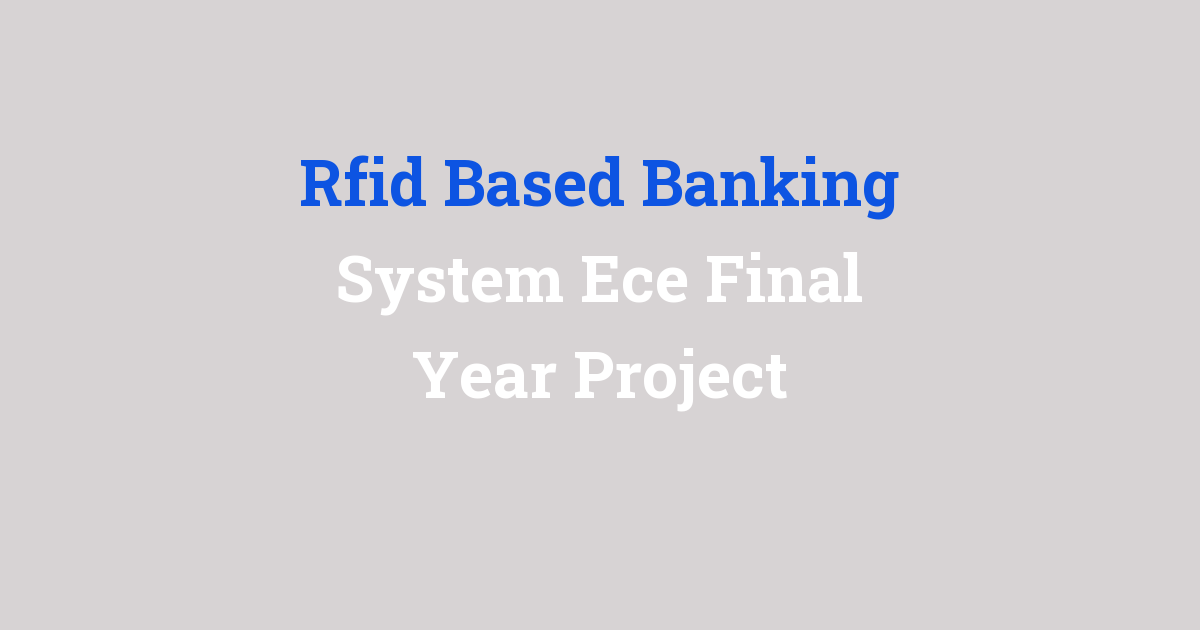Final year project in ECE focused on developing a banking system utilizing RFID technology.
RFID Based Banking System ECE Final Year Project
Introduction
RFID (Radio Frequency Identification) technology has been increasingly used in various industries for tracking and identifying objects and personnel. In the banking sector, RFID technology can be utilized to enhance security and efficiency in processes. With the use of RFID tags and readers, banks can streamline their operations and provide better service to customers. In this final year project, we aim to develop an RFID-based banking system that will revolutionize the way transactions are conducted and improve security measures.
Problem Statement
The current banking system relies heavily on manual input and physical identification methods for customer verification and authentication. This process is time-consuming and prone to errors, leading to inefficiencies in the system. Moreover, the traditional methods of authentication, such as PINs and passwords, are susceptible to fraud and theft. There is a need for a more secure and efficient system that can eliminate these problems and provide a seamless banking experience for customers.
Existing System
The existing banking system involves customers providing their identification documents, such as ID cards and passbooks, to the bank teller for verification. The teller then manually enters the customer’s information into the system and processes the transaction. This process is not only slow but also leaves room for human error. Additionally, customers have to remember their PINs and passwords to access their accounts, which can be a hassle.
Disadvantages
– Manual input leads to errors in transactions and customer information
– Traditional authentication methods are not completely secure
– Customers may forget their PINs and passwords, leading to account access issues
Proposed System
The proposed RFID-based banking system will use RFID tags embedded in customer cards or mobile devices for identification and authentication. Customers will simply have to scan their RFID tags using a reader at the bank to access their accounts and conduct transactions. This system will eliminate the need for manual input and provide a more secure way of verifying customers’ identities.
Advantages
– Faster transaction processing
– Enhanced security measures
– Convenient for customers
– Eliminates the need for remembering PINs and passwords
Features
– RFID tags for customer identification
– RFID readers at the bank for scanning
– Secure encryption algorithms for data protection
– User-friendly interface for easy navigation
– Transaction history tracking for customers
Conclusion
In conclusion, the RFID-based banking system proposed in this project offers a more efficient and secure way of conducting transactions and verifying customer identities. With the implementation of RFID technology, banks can streamline their processes and provide a better banking experience for customers. This project has the potential to revolutionize the banking sector and set a new standard for transaction security and efficiency.

